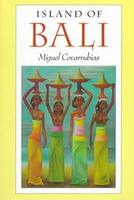Miguel Covarrubias

Miguel Covarrubias, one of the most original caricaturists and illustrators of the 20th century, was born on this day in 1904 in Mexico City.
Through the influence of his father, Miguel Covarrubias arrived in New York City as an attache to the Mexican consulate in 1923, but by the following year the 20-year old had published his celebrity caricatures in such publications as Vanity Fair and the New York World. D.H. Lawrence called his style of drawing "grim earnest hideousness," but to the New York literary elite, Covarrubias' caricatures were outrageously wacky and fresh; dispensing with the hard-edged contour lines commonly used by his peers in favor of shaded geometric shapes, he drew well-known faces like they were tribal masks, with the most primal elements of their personae whimsically stretched across them.

He published a few books of drawings (The Prince of Wales and Other Famous Americans, 1925; Negro Drawings, 1927), designed costumes and sets for Broadway and illustrated books before marrying dancer Rosa Rolanda and honeymooning in Bali, where he began the anthropological observations and sensuous oil and gouache paintings which formed the basis for his best-selling book Island of Bali
He also had a regular feature in Vanity Fair during the 1930s known as the "Impossible Interviews" in which he would pit two incongruously-paired celebrities together in dubious dialogue (i.e., Martha Graham vs. Sally Rand; Mahatma Gandhi vs. Aimee Semple McPherson; Sigmund Freud vs. Jean Harlow; or, seen above, Clark Gable vs. the Prince of Wales); but after the success of Island of Bali, he left New York and caricature behind to move to Mexico and to focus on painting and writing.
There he and Rosa were the center of an international salon which included Diego Rivera and his wife Frida Kalho, Nelson Rockefeller (rumored to have been Rosa's some-time lover), Orson Welles and Dolores Del Rio, Henri Cartier-Bresson and Georgia O'Keeffe. In 1950, Trygve Lie invited Covarrubias to help select art for the United Nations headquarters in New York, but soon thereafter Covarrubias was banned from the U.S. for his alleged involvement in Communist causes.
While busy working on several books at once, he accepted a position as artistic director of dance at the National Palace of Fine Arts in Mexico City, where he developed a crush on a teenaged dancer named Rocio Sagaon. Rosa reacted by threatening the girl with a kitchen knife, then a gun; Covarrubias repudiated his civil marriage to Rosa and married Rocio in a Catholic ceremony shortly before dying, from either a perforated ulcer or a botched operation, on February 4, 1957.
Labels: Painting and Sculpture, Pop Culture





0 Comments:
Post a Comment
Subscribe to Post Comments [Atom]
<< Home